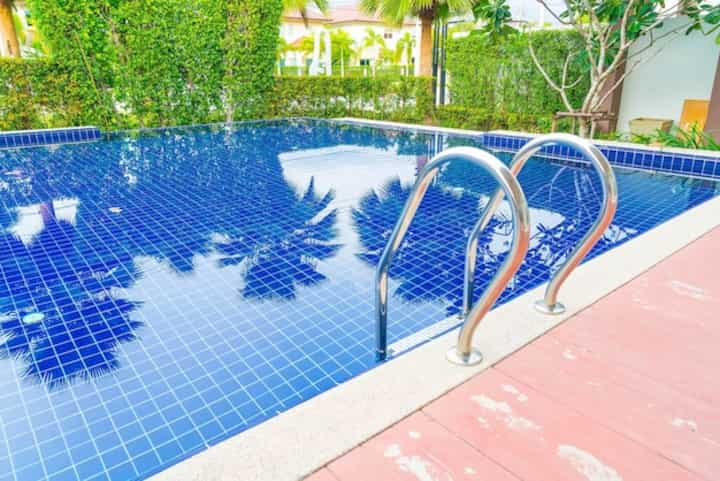
Revitalize Your Pool with Expert Plaster Resurfacing Services
Swimming pools are a delightful addition to any property, providing a space for relaxation, exercise, and social gatherings. However, over time, the surface of a pool can become worn and damaged, detracting from its aesthetic appeal and potentially leading to more significant issues. Plaster resurfacing is a crucial service for maintaining the integrity and appearance of your pool. This article explores the benefits of expert plaster resurfacing services, offering valuable insights into the process and its advantages.
Understanding Plaster Resurfacing
Plaster resurfacing is the process of applying a new layer of plaster to the interior surfaces of a swimming pool. This procedure not only enhances the pool’s visual appeal but also addresses any underlying issues such as cracks or rough patches that may have developed over time.
Why Plaster Resurfacing is Essential
Over time, the original plaster surface of a pool can degrade due to various factors such as chemical exposure, weather conditions, and regular use. Plaster resurfacing is essential for several reasons:
- Restores Aesthetic Appeal: A fresh plaster coat can dramatically improve the pool’s appearance, making it look new and inviting.
- Improves Durability: Resurfacing strengthens the pool’s interior, reducing the likelihood of future damage.
- Enhances Safety: Smoothing out rough or uneven surfaces helps prevent injuries to swimmers.
- Prevents Leaks: A new plaster layer can seal minor leaks and prevent water loss.
For more details on the importance of plaster resurfacing, read more about this topic.
The Plaster Resurfacing Process
The process of plaster resurfacing involves several key steps, each critical for achieving a high-quality finish. Here’s a breakdown of the typical procedure:
1. Draining the Pool
The first step is to drain the pool completely. This allows the resurfacing team to access the entire interior surface and perform a thorough inspection.
2. Surface Preparation
Once the pool is empty, the existing plaster surface is cleaned and prepped. This may include:
- Removing any loose or damaged plaster
- Sanding the surface to ensure proper adhesion of the new plaster
- Applying a bonding agent to enhance the new plaster’s adherence
Learn more in this detailed guide to plaster resurfacing preparation.
3. Applying the New Plaster
With the surface prepped, the new plaster is applied. This step requires precision and expertise to ensure a smooth, even finish. The plaster is troweled onto the pool’s surface, creating a uniform layer that will cure over time.
4. Filling and Balancing the Pool
After the plaster has been applied and cured, the pool is refilled with water. It’s crucial to balance the pool’s chemical levels to protect the new plaster and ensure the water is safe for swimming.
Explore further insights here on the complete plaster resurfacing process.
Choosing the Right Professionals
When considering plaster resurfacing services, selecting experienced professionals is vital to achieving the best results. Qualified experts will provide:
- Quality Materials: Use of high-grade plaster for durability and longevity.
- Expert Craftsmanship: Skilled application techniques for a flawless finish.
- Customer Satisfaction: A commitment to meeting customer expectations and delivering exceptional service.
Check out customer reviews here to see how others have rated their experiences with professional plaster resurfacing services.
Conclusion
Revitalizing your pool with expert plaster resurfacing services can significantly enhance both its functionality and aesthetic appeal. By understanding the process and benefits, and choosing the right professionals, pool owners can ensure their pool remains a beautiful and safe space for enjoyment. Find additional information here to make an informed decision about your pool resurfacing needs.